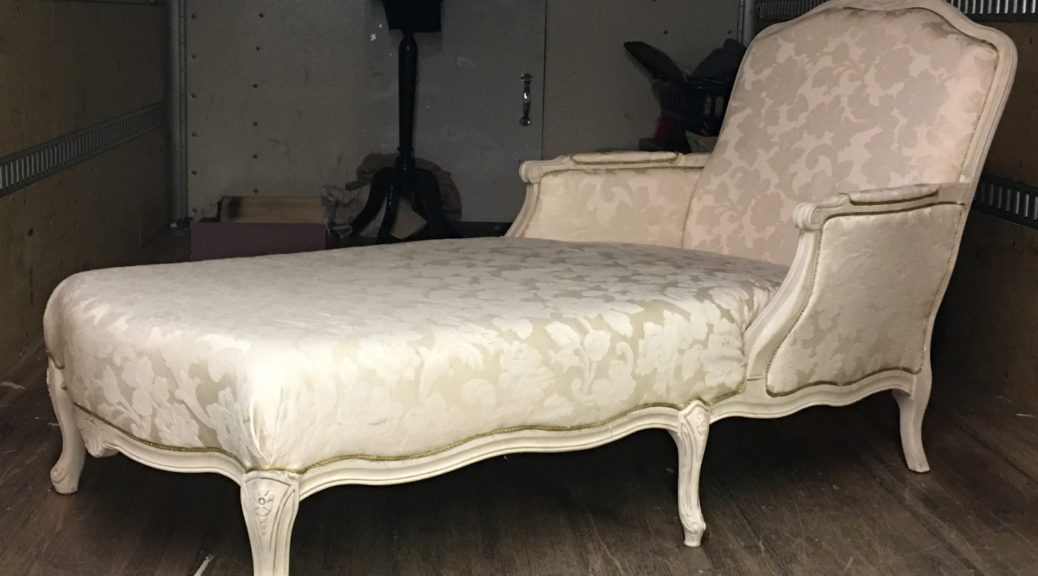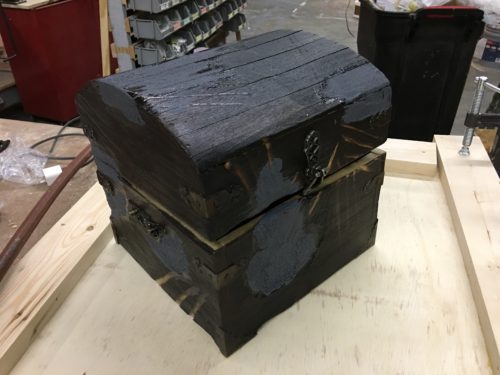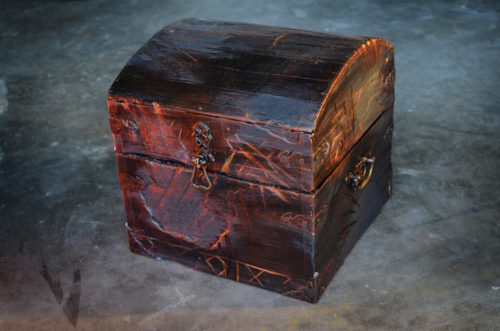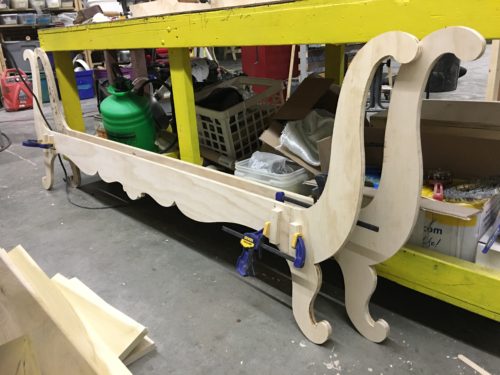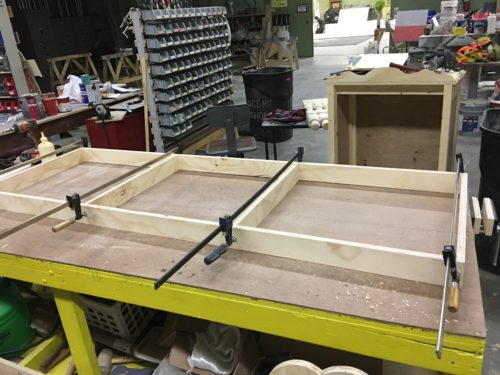I just finished Buyer and Cellar at Triad Stage. We needed an all-white antique French chaise. I could not find any within our budget, especially since I knew I would need to reupholster anything I found.
One of the great prop secrets is that you can order furniture frames from companies that sell to professional upholsters. I found a company that made a chaise in the style I needed. You can order a frame unfinished and knocked down, which means it arrives without any paint or stain, and it is completely unassembled. The cost is a fraction of a finished piece (and the shipping is far cheaper, too).

The frame came flatpacked just like a piece of IKEA furniture, only instead of allen keys, it fit together with glue and dowels.

Other than a few extra (I hope) pieces, assembling the whole piece was easy to do with the provided instructions.

At this point, a real upholster would start adding webbing for the seat. I like to put a flat sheet good across the whole base. It makes it much more rigid, which a lot of actors prefer because they can get out of the chair much more quickly. It also provides support for when the director wants someone to stand on the chair, which will inevitably happen (and did indeed happen on this show).

I painted the exposed wood before adding any fabric to avoid a mess. I upholstered the back and inner panels first, because the outer panels would block off where I needed to staple.

The chaise has a groove routed along the edge, so I stapled the fabric into that and then trimmed the excess. My thought was that I could stick some 3/16″ decorative cording on top to hide the staples and give it a nice, clean edge.

I covered the side panels in cardstock and put the cushion directly on that. I also tried to cover the back in cardstock, but that didn’t give enough support, so we needed to go back in and reinforce it with some webbing.
The seat is a luxurious piece of four-inch foam made possible by a 70%-off coupon from Jo-Ann Fabric.

In the picture above, you can see the fabric before it was trimmed. I found an Olfa knife worked really well. We also found some gold cord in the Christmas aisle at the craft store that worked well to finish the edges.

The remainder of the upholstering was done by Keri Dumka and Shay Hopkins-Paine, who worked with me on this show. Overall, it was an interesting experience to upholster a piece of furniture totally from scratch. It also gave me some ideas on how to build upholstered furniture in the future.

